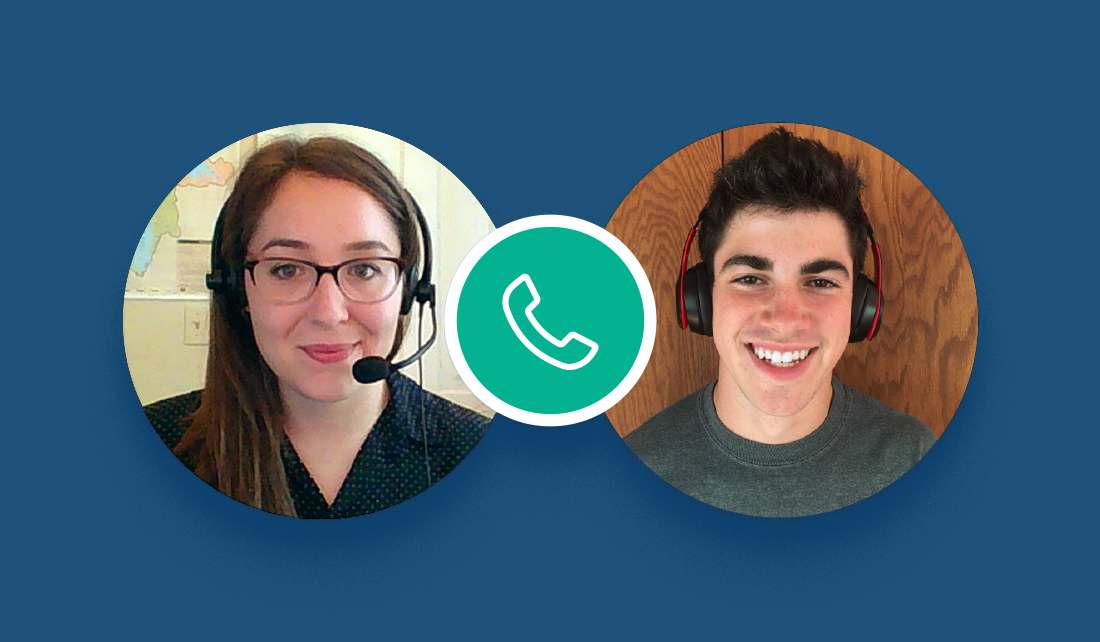
“I was 19 years old. I never even knew any of this stuff existed. I didn’t know I could be a scientist. I thought that was something way beyond what I could be,” said Susan Daniel, a Buffalo State College researcher who studies invertebrates that live at the bottom of the Great Lakes.
She was talking to students from Ellis Middle School in Elgin, Illinois, who had posed questions for her and a handful of other scientists taking part in a virtual session bringing these two groups together. These students in Holly Yee’s science classes had been studying the Great Lakes and the participating scientists are experts on the subject. They hail from the Environmental Protection Agency (EPA), universities and the Sea Grant program.
Illinois-Indiana Sea Grant (IISG) developed the Scientists Ask Students (SAS) program to connect students with Great Lakes scientists on board the EPA research ship, the Lake Guardian, via videocasts. While out on the lakes collecting samples, scientists visit classrooms virtually and talk with students about aquatic science, water quality monitoring, careers, and life on a ship. Since the program’s inception, over 25 scientists, 33 teachers, and more than 3400 students throughout the Great Lakes have participated.
This spring, due to COVID-19, as with most events, SAS videocasts needed to be rethought, if the program happened at all. Working with several teachers, IISG’s Kristin TePas and Allison Neubauer refashioned the get-togethers with everyone in their homes, both scientists and students alike.
“This has resulted in a fair amount of trial and error to find processes and platforms that work well,” said Neubauer, IISG Great Lakes outreach associate. “As it turns out, I think this has been beneficial in encouraging participation from different types of learners, ranging from those who feel comfortable unmuting themselves and directly asking the scientists questions to those who would prefer to type in a chat box.”
The interactions with scientists and the Elgin students included prerecorded videos created when convenient—introductory videos from scientists describing their work, students posing questions, and scientists’ recorded answers. Many of the questions focused on Great Lakes conditions and issues, but some were more personal in nature, such as what is your favorite thing about being a scientist?
“Quite a few of my students expressed how much they learned by having these virtual conversations with the scientists and that it sparked their interest to want to explore the Great Lakes with their families,” said Yee.
In Mishawaka, Indiana, John Gensic’s high schoolers were learning about genetically modified organisms (GMO) and biotechnology, including farm-raised GMO salmon, so TePas and Neubauer recruited Sea Grant specialists in Great Lakes fisheries and aquaculture to answer their questions.
They organized two live sessions to give students more opportunity to take part. And while these sessions included real-time interactions, they also allowed for submitting questions after the fact.
“This opportunity actually was better via remote learning because many classes of students could participate at once, and they weren’t missing another class to join this call,” said Gensic. “It helped students see potential careers and helped students meet people who actually worked in the places we had previously read about. The experience also helped me grow in my understanding as a teacher to make more relevant lessons in the future.”
The third session was with Benita Cataldo’s high school biology students in Waterton, New York, and this time the students posed questions in the chat space in real time.
Many of the educators that bring these videochat sessions to their students have also taken part in other Sea Grant opportunities to enhance aquatic science and Great Lakes education in their classrooms. In fact, they likely spent some time on the Lake Guardian themselves.
Every summer, the Center for Great Lakes Literacy, a consortium of seven Sea Grant programs, conducts a weeklong Shipboard Science workshop where about 15 educators work side-by-side with scientists on the EPA ship. Teachers explore aquatic sciences and learn about resources that help them bring Great Lakes and ocean literacy activities to their classrooms and they build networks with educators and scientists. Sadly, the 2020 Lake Michigan workshop was cancelled due to COVID-19.
Most of the focus of SAS and the Shipboard Science Workshop has been on the opportunities they bring to educators and, of course, their students. Educators have described organizing field trips, incorporating new curricula, and bringing real-world Great Lakes issues to the classroom. Students’ eyes may also be opened to new career possibilities.
But the benefits can go both ways. Scientists can be inspired as well.
“When these students come and ask good questions and really remind you what you’re doing is important, it lights that fire in your belly for a couple more months—to really have that drive to do research, and do it well,” said Daniel.
Illinois-Indiana Sea Grant is a part of University of Illinois Extension and Purdue Extension.
Writer: Irene Miles
Videographer: Hope Charters

